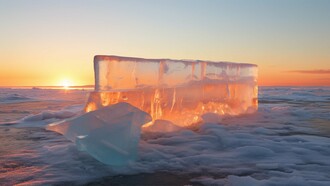Communications experts all agree that a picture is worth a thousand words. It's true. A striking image has an instant emotional impact that even a thousand words cannot create. But the intellectual impact is more complicated. An image does not have full effect unless we take the trouble to understand what we see. Our failure to connect the dots can be tragic.
For example, a familiar image in the news today is a family sorting through the rubble of its collapsed home, hoping to find irreplaceable treasures that survived an unprecedented wildfire or storm. The picture triggers empathy. However, it also shows the consequences of much earlier events in a chain of causes and effects. We can draw a straight mental line between the rubble, society's addiction to fossil fuels, the policies and policymakers who encourage their use, and the profit-hungry corporations that produce them.
Between the rubble and the policies are the large electric plants burning fossil fuels and the internal combustion engines under the hoods of 1.5 billion cars on today's roads. They convert fossilized vegetation into gases that damage human lungs, change the atmosphere's chemistry, alter ecosystems and the species that depend on them, and produce hellish weather.
The victims of lung cancer and catastrophic weather often turn to God for answers to why these tragedies befell them. It makes more sense to ask the people who write our laws, like those in the many nations that subsidize the production and consumption of fossil fuels. Many policymakers think about the politics of their decisions, not the family sifting through the debris left of their lives.
The most famous image in history is an American astronaut's photo of the Earth as he emerged from behind the Moon on Christmas Eve, 1968. Another photographer called it "the most influential environmental photograph ever taken." It was an aha moment frozen in time, momentarily raising the world's awareness that we Earthlings inhabit a delicate blue jewel in a lonely, cold, black void. It reminded us that all the world's people, rich and poor, black and white, the citizens of 195 nations, seven continents, seven or eight major ecosystems, and at least 3,800 cultures, are on this ride together.
The view of Earth is even more dramatic for the few who see it in real-time from space. It's called the "overview effect," where astronauts "report overwhelming emotion and feelings of identification with humankind and the planet as a whole." Some say it transformed their lives.
On the flip side, humans have the capacity, perhaps even the tendency, to alter and destroy life on the planet. The moral lesson is that preserving the biosphere and its biota should be our highest priority, much higher than the ideologies and wars that divide us. Unfortunately, the lessons have not taken root, and Earthrise has faded from a lasting revelation to another pretty picture.
However, the COVID pandemic blessed us planetary citizens with another revelatory experience. In the documentary movie, "The Year the Earth Changed," narrator David Attenborough takes a visual tour of what happened when civilization locked down. People stayed home, streets and highways emptied, air pollution disappeared, wildlife reappeared and resumed its natural cycles, and the biosphere healed with incredible speed. In one scene, children climbed on top of roofs in India to see the majestic Himalayas in the distance for the first time. Pollution had hidden them so long that even the parents forgot the mountains were there.
While weather disasters keep reminding us of fossil fuels' actual costs, COVID gave us a glimpse of what we can recover by stopping it. The juxtaposed images illustrated the danger of losing treasurers we cannot replace and the joy of rediscovering treasures we'd forgotten we had.
Unfortunately, irreversible damages and irreplaceable losses are already underway. By one count, modern civilization threatens the extinction of one million of the world's 8 million plants and animal species. Each lost species sets an ecological chain of disruptive events in motion, including the loss of other species that "may have taken thousands or millions—even billions—of years to evolve."
Views from space reveal dramatic ice declines at the poles, which will further change climate patterns and ecosystems. Photographs from space also show green expanses of forests and fields covering the continents. However, substantial expanses of green are turning barren, infertile, and brown due to desertification. "The ongoing transformation of Earth's landscapes presents a dire warning about the future of our planet," researchers report. They say more than three-quarters of the world's land has shown a permanent increase in dryness over recent decades."
"Nearly 40% of the world's land, excluding Antarctica, has become drylands," they found, "a shift that threatens not only ecosystems but also the lives and livelihoods of billions of people…The effects are far-reaching, jeopardizing sustainable development, environmental protection, economic equality, and the achievement of global goals."
In recent years, many of the most committed environmental leaders acquired their resolve during tours to witness collapsing glaciers and melting Arctic ice. Global warming is happening three times faster there than elsewhere on the planet. For many on the tours, the impact was similar to what astronauts experience seeing Earth from space.
"When we change our perspective, it enables us to see the world from a different angle," Crown Prince Haakon of Norway told officials who met in Iceland in 2022. "A change of perspective helps us identify with others – and immerse ourselves in their view. Changing the perspective redistributes power and position. This is vital for progress, for development—and for solidarity."
However, we don't have to rocket into space or brave the Arctic to change our perspectives about life on Earth. We can look beyond the pain and beauty that photographers and videographers document to understand these images' lessons.
At the same time, today's most crucial space race may be how many leaders we can send into orbit to transform their perspectives on our relationships with one another and the planet. When that happens, every government and civil society leader should be required to make the trip.















